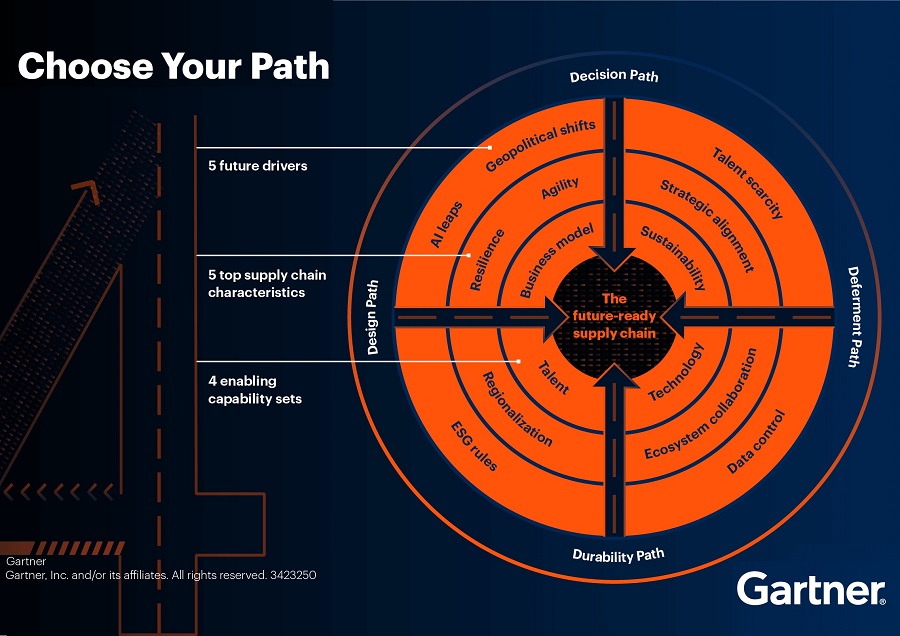Design: Emphasizes business model innovation to reduce complexity, focusing on product designs that can be shared across variations. Organizations prioritize simplification, standardization, and differentiation based on customer and product segmentation to streamline operations and enhance future success.
Durability: Highlights sustainability and risk management as essential for long-term viability, focusing on sustainable sourcing and transparency in initiatives. By minimizing environmental impacts, these organizations build resilient supply chains that withstand uncertainties and contribute positively to their ecosystem.
Deferment: Adopts a cautious approach with strategic pauses in investments, focusing on operational excellence and cost containment. Organizations are fast followers, observing others before investing, common in industries where regulatory pressures and lower risk appetites influence strategies.
Decision: Leverages technology and talent to manage complexity, emphasizing AI, machine learning, and real-time data analytics. Organizations prioritize scenario planning and real-time visibility, fostering a culture where employees thrive in dynamic environments and support growth through innovation.
“While CSCOs can be successful aligning to any of the four profiles, the data suggests following the Design profile. Its emphasis on business model innovation capabilities could be the most fruitful, as there are more leaders aligned with the Design profile compared to the others,” said Manenti. “Critically important is a commitment to making very focused investments aligned to their profile, something the leading organizations share.”
Gartner clients read more in: Supply Chain Executive Report: Future of Supply Chain 2025. Nonclients can learn more in: Future of Supply Chain.



![Gartner future supply chain drivers 2025 [Image Alt Text for SEO]](https://emt.gartnerweb.com/ngw/globalassets/en/newsroom/images/graphs/2025-02-18-gartner-future-supply-chain-drivers.png)








